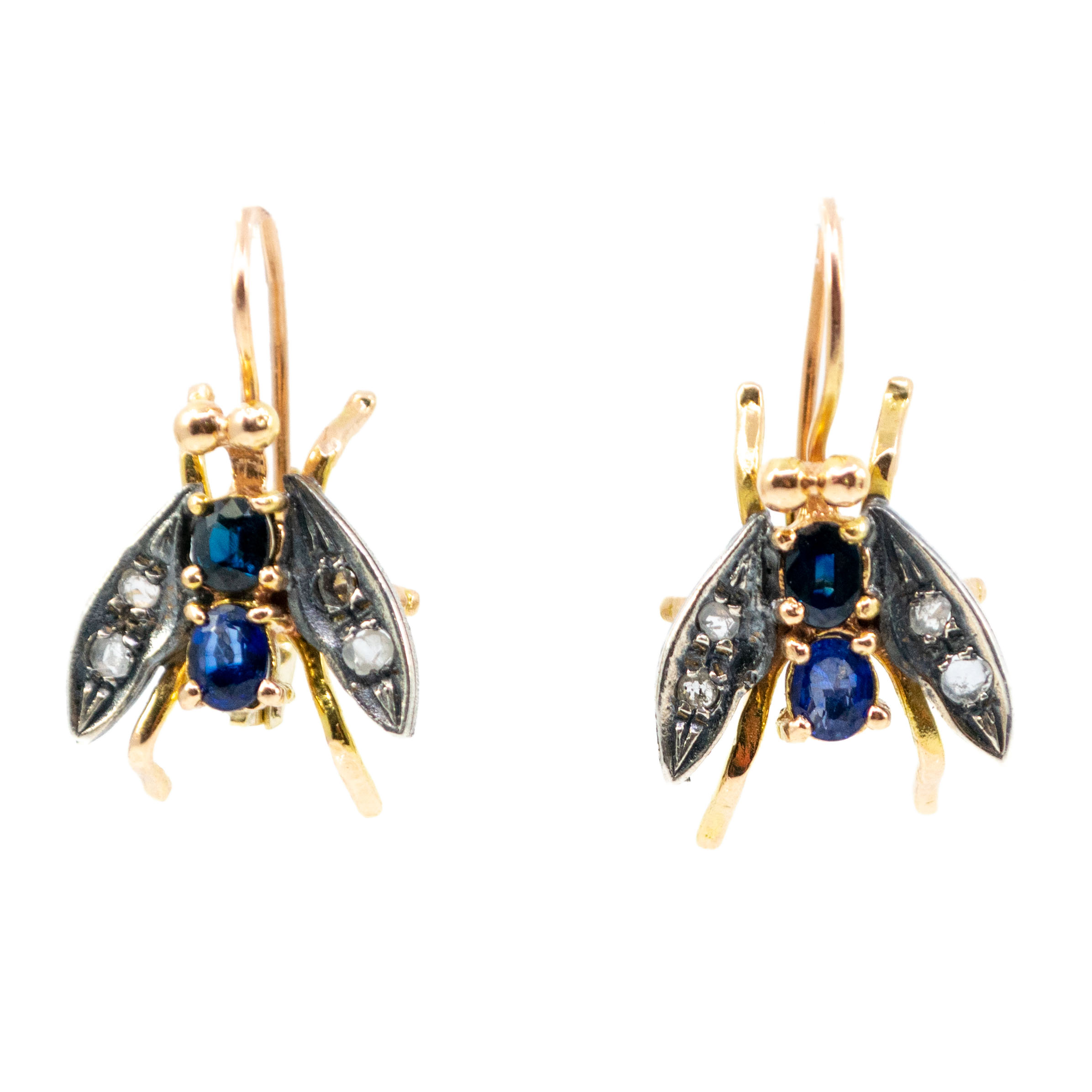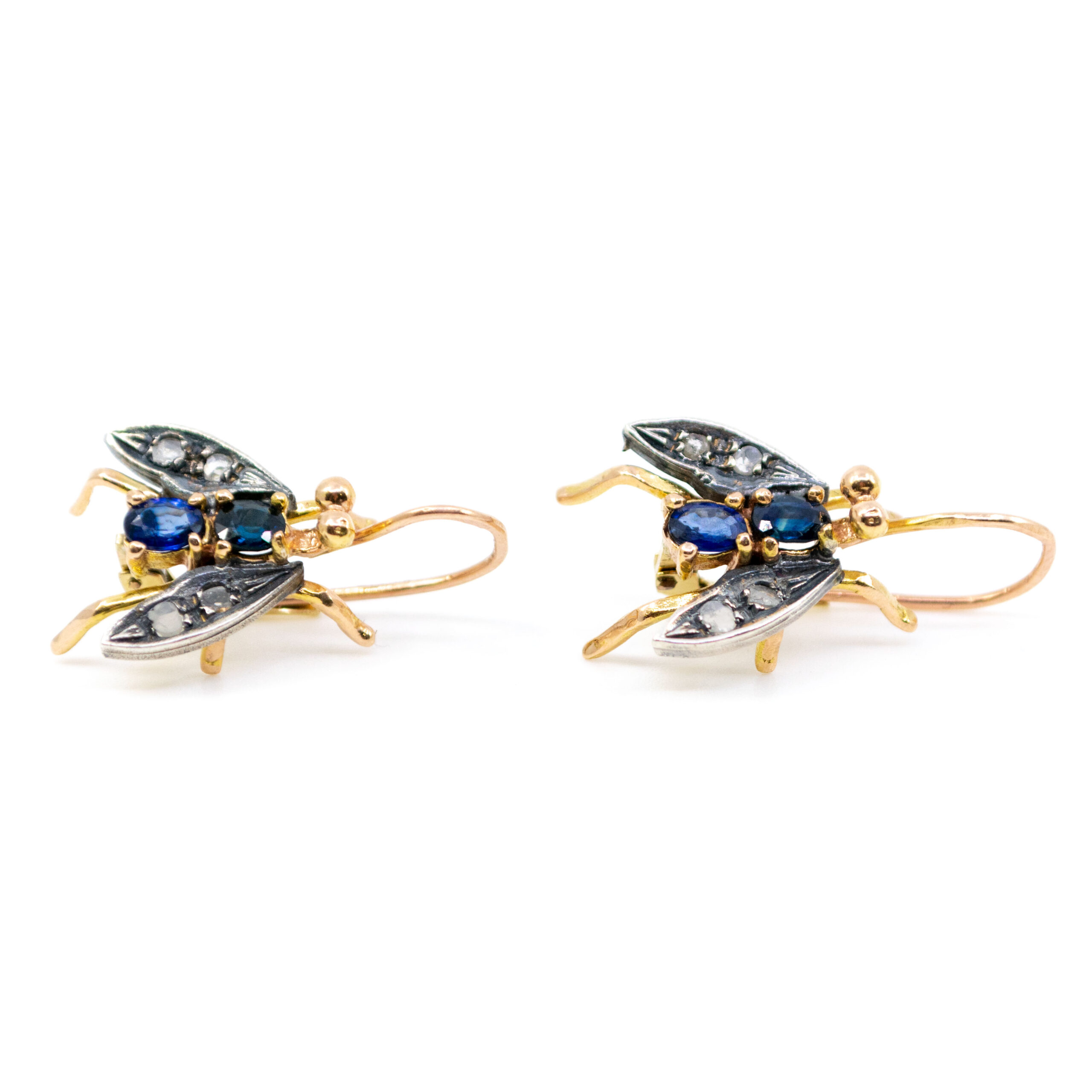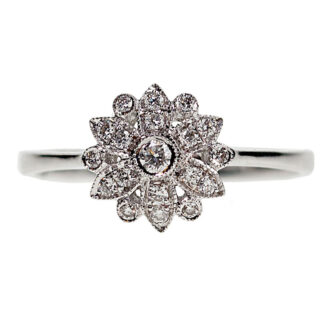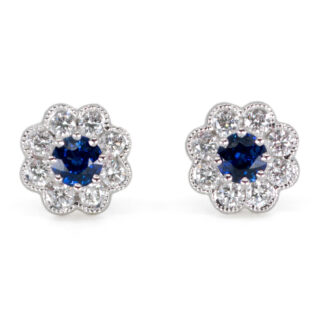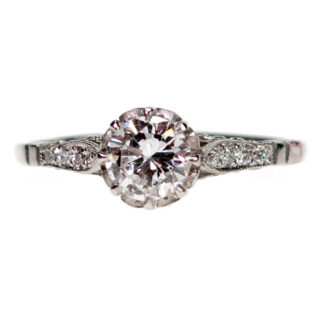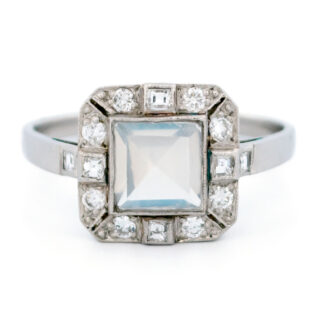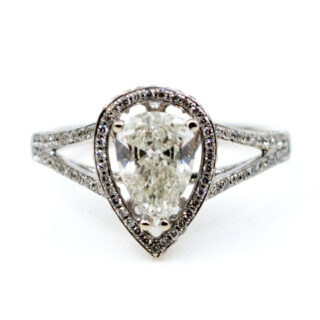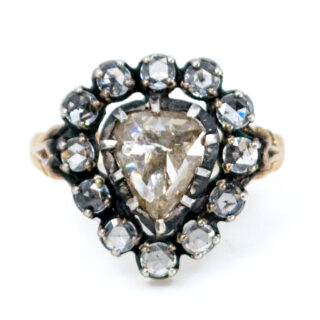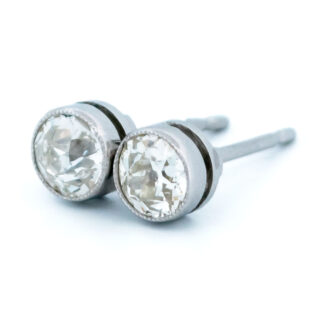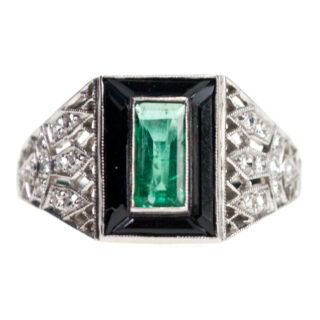These elegant Victorian-style earrings feature insects designs, with oval-shaped sapphires of approximately 1.20 carats as the centerpiece, accented with rose-cut diamonds, all crafted in a combination of 9k gold and silver.
Details: ±1.20ct Sapphires, Rose-cut diamonds, 9k, Silver Earrings.
Design Era: New Victorian.
Dimensions: H 2.6 x L 1.6 cm.
Weight in grams: 5.8.
Condition: New.
Shipping and Pickup: This lovely piece ships from our store located in the center of Amsterdam, The Netherlands. We offer both registered shipping and local pickup at our store. In the case of local pickup, any applicable shipping costs will be refunded.
About Us: Add some sparkle to your style with Binenbaum.com. We offer a stunning selection of antique and vintage jewelry that you won’t find anywhere else. From timeless rings and dazzling necklaces to unique brooches, we have something for every taste and occasion. Visit our website today and treat yourself to a piece of history.
| Design Era | |
|---|---|
| Design & Historical Context | The Victorian Era spanned Queen Victoria's rule of England from 1837 until 1901. During this time, a middle class began to emerge, sparking a demand for jewelry in the mass market, jewelry trends often reflected the tone of current events. The era is usually divided into several subsections: the Romantic Period from 1837 to 1861, the Grand Period from 1861 to 1880, and the Aesthetic Period from 1880 to 1901. During the Romantic Period jewelry also featured nature-inspired designs, similar to jewelry of the Georgian era. Frequently, these designs were delicately and intricately etched into gold. Lockets and brooches were popular in daytime jewelry during the early Victorian era, whereas colored gemstones and diamonds were worn during the evening. During the Grand Period jewelry , because the Grand or Mid-Victorian era corresponded with the death of Queen Victoria's husband, many jewelry pieces have solemn, somber designs. Known as mourning jewelry, the pieces feature heavy, dark stones. Jet, onyx, amethyst, and garnet are frequently found in jewelry from this period. Compared to previous periods, Mid-Victorian-era jewelry features highly creative, colorful designs using shells, mosaics and gemstones. During the Aesthetic period, jewelers used diamonds and feminine, bright gemstones such as sapphire, peridot, and spinel. Star and crescent designs as well as elaborate hat pins were also popular. Some scholars believe the aesthetic era began sooner, in 1875, and ended as early as 1890. |
| Key Materials | |
| Materials & Craftsmanship | Sapphire Sapphire is a mineral made from aluminum oxide that is known for its beautiful colors, including blue, pink, yellow, green, purple, and orange. The most popular variety of sapphire is blue sapphire, which has a medium to deep blue color and strong saturation. Blue sapphire is typically the most popular and most affordable of the three major precious gemstones (emerald, ruby, and sapphire) and is often used in a variety of different types of jewelry, including rings, earrings, pendants, and bracelets. Fancy sapphires, which are available in a variety of different colors, are often more rare and expensive than blue sapphires and are prized for their unique and beautiful colors. Sapphire is a very hard and durable gemstone, with a Mohs hardness of 9 out of 10, which makes it resistant to scratches and other types of damage. It is also believed to have various healing properties and is sometimes used in traditional medicine and meditation practices. Rose-cut diamond The rose cut is a type of diamond cut that was popular in the 1500s and remained common during the Georgian and Victorian eras. It is characterized by a flat bottom with a dome-shaped crown that rises to a single apex, giving the diamond a shape that resembles a rose bud. Rose cut diamonds can have anywhere from 3 to 24 facets, which are small, flat surfaces that are cut into the diamond to create a specific shape and enhance its sparkle and brilliance. Unlike modern diamond cuts, such as the round brilliant or princess cut, the rose cut has a lower crown and a less brilliant appearance. It is a more primitive diamond cut that was used before the development of more advanced cutting techniques. However, it is still a popular choice for collectors of antique jewelry and for those who appreciate the timeless beauty of vintage cuts. Rose cut diamonds are typically less expensive than diamonds with more modern cuts because they require less labor and material to produce. They are often used as accent stones in jewelry designs or as the main gemstone in vintage-style pieces. Despite their lower price, rose cut diamonds can still be beautiful and valuable, and they are a popular choice for those who appreciate the unique charm and character of antique jewelry. 9k 9 karat gold is an alloy made up of 37.5% pure gold and 62.5% other metals, such as copper, silver, or zinc. The addition of other metals allows for the creation of gold in various colors, including yellow, white, and rose. 9 karat gold is a common choice for jewelry as it is less expensive than higher karat gold, due to the lower percentage of pure gold in the alloy. 9 karat gold is also slightly harder and more durable than pure gold, making it more resistant to scratches and dents. Silver Silver is a white metallic element that is known for its excellent conductivity of heat and electricity. It is represented on the periodic table of elements by the symbol Ag, and it is a member of the noble metals, which are known for their excellent resistance to oxidation. Silver is a relatively soft metal, with a hardness that is intermediate between gold and copper. It is more malleable and ductile than gold, which means that it can be easily shaped and molded into various forms. However, it is not as hard as copper, which means that it is more prone to scratches and other types of damage. Because of its softness, silver is usually alloyed with another metal to harden it enough to maintain the desired shape and details when it is used in jewelry and other decorative objects. This helps to give it the necessary strength and durability for use in these types of applications. Throughout history, silver has played a prominent role in the production of jewelry and objets d'art. It is prized for its beauty and versatility, and it is often used in a wide variety of different types of jewelry, including rings, earrings, pendants, and bracelets. It is also used in decorative objects, such as candlesticks, vases, and other decorative items. |
| Dimensions | H 2.6 x L 1.6 cm |
| Gender | |
| Weight (in grams) | 5.8 |
| Condition |
Enhance the Beauty of Your Jewelry with Proper Care
Wearing your jewelry is a special way to express yourself and add a touch of personal style to any look. However, to ensure your jewelry remains in pristine condition, there are a few simple steps you need to take to keep it looking its best.
General Care Instructions:
Remove jewelry when showering or bathing, especially when at the beach, in the sea or in chlorinated water.
Avoid wearing jewelry while doing physical work such as housekeeping, gardening or exercise.
Storing your jewelry in a dry and cool place will help protect it from moisture, dirt and dust.
Keeping it away from harsh chemicals such as bleach, ammonia and chlorine will help to avoid discoloration and damage.
Cleaning your jewelry regularly with a soft cloth will help to keep it looking shiny and new.
Avoid exposing your jewelry to extreme temperatures, such as leaving it in direct sunlight or near a heater, as this can cause damage.
Handle your jewelry carefully and avoid dropping it, as this can cause the stones to loosen or the metals to scratch.
Finally, if possible, have your jewelry professionally checked and serviced. This will ensure that any potential problems are spotted and fixed before they become worse.
By following these tips, you can enjoy your precious jewelry for many years to come.
Related products
-
Diamond 18k Cluster Ring 7035-0694
€ 1.395,00 VAT incl. (where applicable) -
Sapphire Diamond 18k Cluster Earrings 8204-0840
€ 1.495,00 VAT incl. (where applicable) -
Diamond Platinum Solitaire Ring 7010-1936
€ 5.695,00 VAT incl. (where applicable) -
Moonstone Diamond Platinum Square-Shape Ring 4489-4682
€ 2.995,00 VAT incl. (where applicable) -
Diamond 14k Pear-Shape Ring 6995-1894
€ 6.695,00 VAT incl. (where applicable) -
Diamond 14k Silver Pear-Shape Ring 6908-7020
€ 4.495,00 VAT incl. (where applicable) -
Diamond Platinum Stud Earrings 5838-1868
€ 3.595,00 VAT incl. (where applicable) -
Diamond Emerald Onyx Platinum Deco Ring 7339-4900
€ 3.895,00 VAT incl. (where applicable)
- Home
- Collection
- Fine Jewelry
- Silver Jewelry
- Silverware
- Boxes
- Candlesticks
- Salt and pepper shakers
- Miniatures
- Salt cellars
- Spoon Set
- Condiments
- Frames
- Napkin Ring
- Spoon
- Oddities
- Cups
- Vases
- Cutlery
- Serving Spoon And Cake Server
- Candlesticks
- Baskets
- Hanukkiah
- Spice Tower
- Yad
- Tea Set
- Sugar Castor
- Napkin Rings
- Wine Bottle Coaster
- Wine Stopper
- Tea Pot
- Jugs
- Rattles
- Hip Flask
- Miscellaneous
- Rings 💍
- About
- Contact
